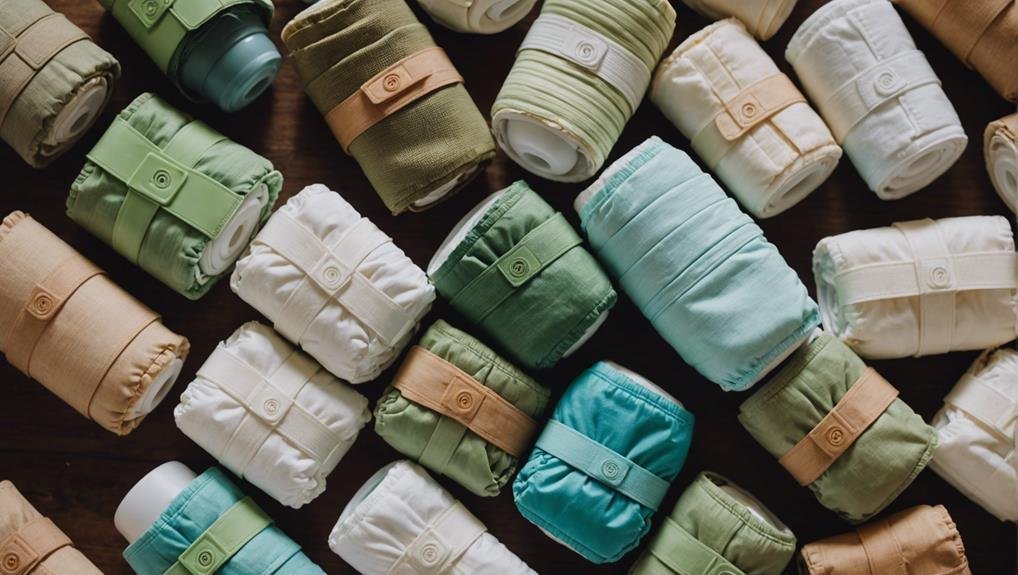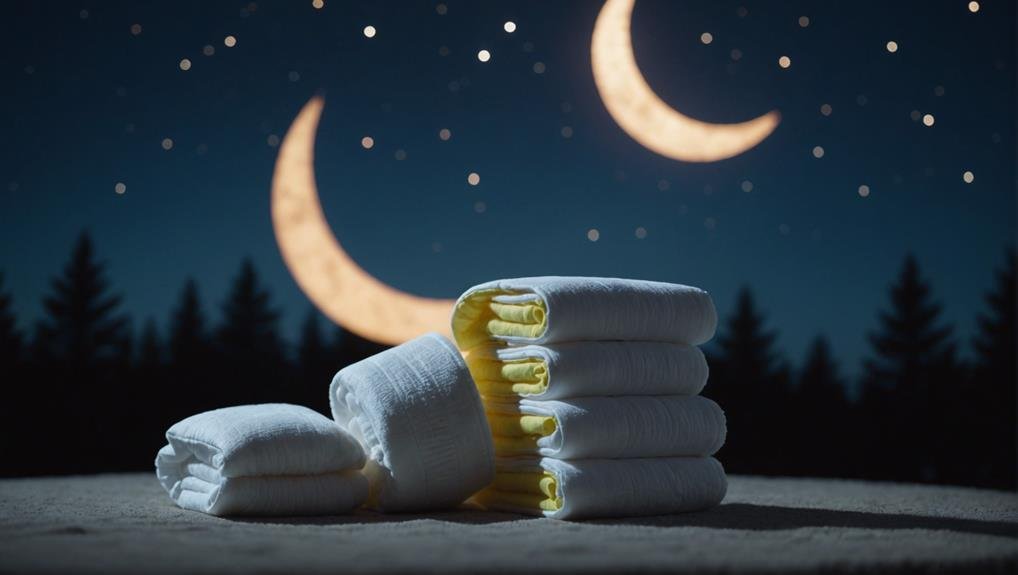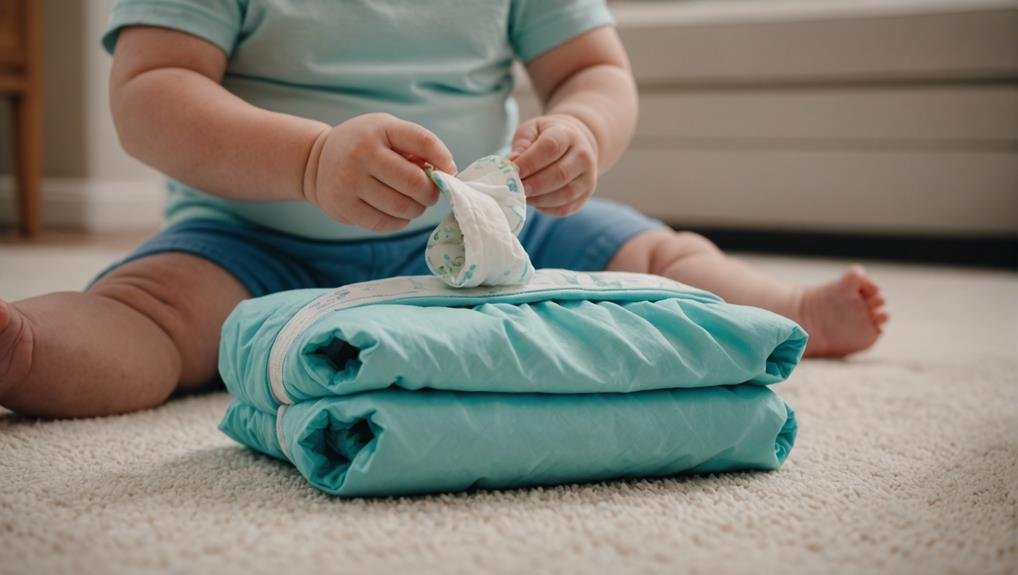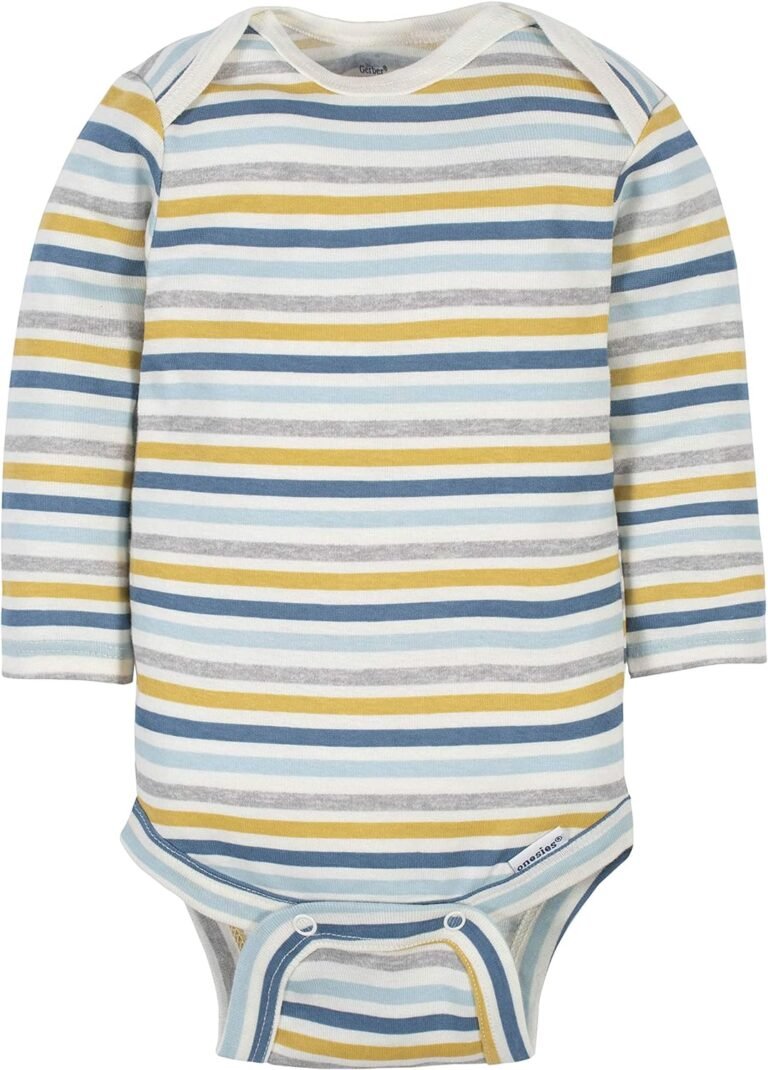Diapers
When it comes to parenting, diapers are like the unsung heroes of the baby care routine, silently absorbing the messes and keeping things in order. But have you ever wondered about the intricate world of diapers beyond just their basic function? From exploring the environmental impact of different types to discovering innovative diapering hacks, there's a whole universe waiting to be uncovered. So, why not take a closer look at this everyday essential and uncover the secrets it holds?
Evolution of Diapers

The evolution of diapers can be traced back through centuries of advancements in absorbent materials and design innovations. Diaper history reveals a fascinating journey from basic cloth wrappings to the technologically advanced disposable diapers of today.
In the early days, mothers used simple cloths or moss to wrap around their babies for absorption. Over time, the need for more efficient solutions led to the development of the first disposable diapers in the 1940s, revolutionizing childcare practices worldwide.
Innovations in diaper technology have continuously improved comfort, absorbency, and convenience. Today, diapers feature advanced materials like superabsorbent polymers and breathable fabrics to keep babies dry and comfortable for longer periods.
Future trends in diaper technology are focused on sustainability, with an emphasis on eco-friendly materials and biodegradable options to reduce environmental impact.
Understanding the history and innovations in diaper design gives insight into the constant drive for improvement in this essential aspect of childcare. Stay informed about the latest trends to provide the best care for your little one.
Cloth Vs. Disposable
When deciding between cloth and disposable diapers, consider factors such as cost, convenience, and environmental impact.
Cost comparison reveals that while cloth diapers have a higher initial investment, they can be more cost-effective in the long run due to their reusability. On the other hand, disposable diapers offer convenience as they're easy to use and dispose of, making them popular in modern diapering trends. However, the convenience factor of disposables comes at a price, both environmentally and economically.
In terms of environmental impact, cloth diapers are generally considered more eco-friendly as they reduce waste and are reusable. Disposable diapers, although convenient, contribute significantly to landfill waste due to their single-use nature.
Current diapering trends show a shift towards more sustainable practices, with many parents opting for cloth diapers to reduce their carbon footprint. Ultimately, the decision between cloth and disposable diapers depends on your priorities regarding cost, convenience, and environmental consciousness.
Diapering Essentials

Consider acquiring essential diapering supplies to ensure efficient and organized care for your baby. A diaper pail is a must-have item for disposing of soiled diapers. These specialized pails are designed to seal in odors, keeping your nursery fresh. Look for a pail with a hands-free lid opening for convenience during diaper changes.
Diaper cream is another crucial item to have on hand. This cream acts as a protective barrier between your baby's skin and moisture, preventing diaper rash. When selecting a diaper cream, opt for one that's fragrance-free and hypoallergenic to minimize the risk of irritation.
Having these diapering essentials readily available will streamline your diaper-changing routine and provide a comfortable experience for your little one.
Remember to regularly empty the diaper pail to maintain a hygienic environment. Additionally, apply diaper cream during every diaper change to safeguard your baby's delicate skin.
Diaper Changing Basics
Acquire the necessary skills for efficient and hygienic diaper changing. When changing a diaper, ensure you have all the supplies within arm's reach: clean diapers, wipes, and a diaper rash cream if needed. Lay your baby on a changing mat or a soft towel, making sure to keep one hand on them at all times for safety.
For diaper changing techniques, follow these steps: carefully remove the soiled diaper, wipe the baby clean from front to back, and gently lift their legs to slide a fresh diaper underneath. Fasten the tabs securely and check for snugness.
When it comes to diaper disposal methods, seal used diapers in a disposal bag before placing them in the trash to contain odors. Consider investing in a diaper pail with odor-locking features for added convenience.
Mastering these basics will help streamline the diaper changing process, ensuring your baby stays clean and comfortable throughout the day.
Eco-Friendly Options

Explore eco-friendly alternatives for diapering to minimize environmental impact and promote sustainability. When considering sustainable materials, look for diapers made from bamboo, organic cotton, or hemp. These options are biodegradable and reduce the use of harmful chemicals found in traditional diapers.
Additionally, some brands offer biodegradable disposable diapers that break down more easily in landfills compared to regular disposable diapers.
Cost-effective choices can also be eco-friendly. Cloth diapers, for example, are reusable and can save you money in the long run. Look for brands that offer natural alternatives like unbleached cotton or diaper covers made from recycled materials.
These options not only benefit the environment but also provide a comfortable and breathable option for your baby's skin.
Diaper Rash Prevention
To prevent diaper rash, it's important to maintain good hygiene practices and regularly change your baby's diaper. Keeping the diaper area clean and dry is crucial in preventing irritation and discomfort. Diaper rash can be caused by several factors, such as prolonged exposure to wetness or feces, sensitive skin, or friction from the diaper.
When it comes to diaper rash prevention, using a diaper cream can be beneficial. Look for creams with zinc oxide or petroleum jelly to create a protective barrier on the skin. Additionally, natural remedies like coconut oil or oatmeal baths can help soothe and protect your baby's skin.
It is essential to debunk some common diaper rash myths. Contrary to popular belief, using cloth diapers doesn't always prevent diaper rash, and leaving the diaper off for extended periods can actually worsen the condition. Ensure you change your baby's diaper promptly to maintain good skin health.
Nighttime Diapering

For nighttime diapering, ensuring proper absorption and leak protection is essential to help your baby sleep comfortably throughout the night. Overnight leaks can disrupt your baby's sleep and lead to discomfort. When diapering at night, it's crucial to choose a diaper specifically designed for extended use. Here are some nighttime solutions to consider:
| Nighttime Diapering Solutions | Features |
|---|---|
| Overnight Diapers | Extra absorbent layers |
| Diaper Booster Pads | Added protection against leaks |
| Cloth Diapers with Inserts | Customizable absorbency levels |
| Overnight Diaper Cream | Barrier to protect against rashes |
| Diaper Changing Routine | Ensure dryness for improved sleep |
Implementing these strategies can help you manage overnight leaks effectively and provide your baby with a peaceful night's sleep. Additionally, incorporating these practices can be beneficial during sleep training, aiding in establishing healthy sleep habits for your little one.
Diaper Bag Must-Haves
Consider essential items to pack in your diaper bag to ensure you're prepared for any situation while on the go with your baby. When selecting a diaper bag, opt for stylish designs that suit your taste and offer ample storage space. Organizing tips can be helpful to ensure everything has its place and is easily accessible.
For travel essentials, pack:
- Diapers (one for every two hours you plan to be out)
- Wipes
- Changing pad
- Diaper rash cream
- Hand sanitizer
- Spare outfit for your little one
Don't forget to include emergency supplies such as:
- Small first aid kit
- Plastic bags for dirty diapers or clothes
- Snacks for both you and your baby
Having these items in your diaper bag will help you handle any situation that arises while you're out and about. Remember, being prepared is key to enjoying your time with your baby stress-free.
Diapering Hacks

Ensure smooth and efficient diaper changes with smart diapering hacks that can simplify your routine and make the process more manageable.
When it comes to diapering on the go, creative solutions can be a game-changer. Consider pre-filling a few disposable bags with wipes and a diaper to grab quickly when you need to change your little one in a pinch. This way, you won't have to lug around the entire diaper bag for short outings.
Additionally, having a portable changing pad that can be easily wiped down will make diapering in unexpected places more convenient.
For diapering in public, discreet techniques can help maintain your privacy and your baby's comfort. Try using a large scarf or blanket as a makeshift cover while changing your baby in a public restroom or even in the backseat of your car. This simple trick can provide both coverage and a sense of privacy in crowded places.
Remember to pack a few extra diapers and wipes in a small, discreet pouch to streamline your diapering process when out and about.
Choosing the Right Size
Selecting the correct size of diapers is crucial for ensuring a comfortable fit and effective leakage protection for your baby. To determine the right size, refer to the size guide provided by the diaper brand. Fit tips include making sure the diaper is snug around the legs and waist without being too tight, as this can cause discomfort and leaks.
Babies go through growth spurts, so it's essential to monitor their weight and adjust diaper sizes accordingly. Signs that your baby may need to size up include red marks on their skin from the diaper being too tight, frequent leaks, or the tabs not fastening properly.
When sizing up, keep in mind that going too big can lead to gaps where leaks can occur. It's a delicate balance between a comfortable fit and proper coverage.
Regularly checking your baby's diaper fit and weight will help you ensure they're in the right size for optimal comfort and protection.
Frequently Asked Questions
Can I Reuse Disposable Diapers?
You cannot reuse disposable diapers due to hygiene concerns and health risks. Proper disposal of diaper waste is crucial to minimize environmental impact. Consider diaper recycling for sustainability as it reduces landfill waste and promotes eco-friendly practices.
Are There Biodegradable Diaper Options?
You can make eco-conscious choices with biodegradable diapers that lessen environmental impact. Consider cost comparison between biodegradable and reusable options. Both offer benefits, yet biodegradable ones are convenient and eco-friendly.
How Do I Prevent Diaper Blowouts?
To prevent diaper blowouts, ensure you're using the correct diaper sizes for your baby's weight. Proper fit is crucial. Fasten snugly but not too tight around legs and waist to contain messes effectively.
What Are the Best Diaper Brands for Sensitive Skin?
When it comes to sensitive skin, opt for organic options like those with hypoallergenic materials. Look for brands that are dermatologist approved, ensuring they are gentle on your skin. Your comfort and well-being matter most.
Can I Use Cloth Diapers for Swimming?
You can use swim diaper alternatives for swimming. Cloth diaper benefits include eco-friendliness and cost-effectiveness. They are a suitable option for swim days. Remember to check for proper fit and absorbency for your little one.
Conclusion
In conclusion, when it comes to diapering, you have the choice between cloth and disposable options. Each has its pros and cons, much like choosing between a sturdy oak tree and a sleek, modern skyscraper. Consider the environmental impact, convenience, and comfort for your baby.
Remember to select the right size and essential items for a smooth diapering experience. Make the choice that best suits your needs and values.



